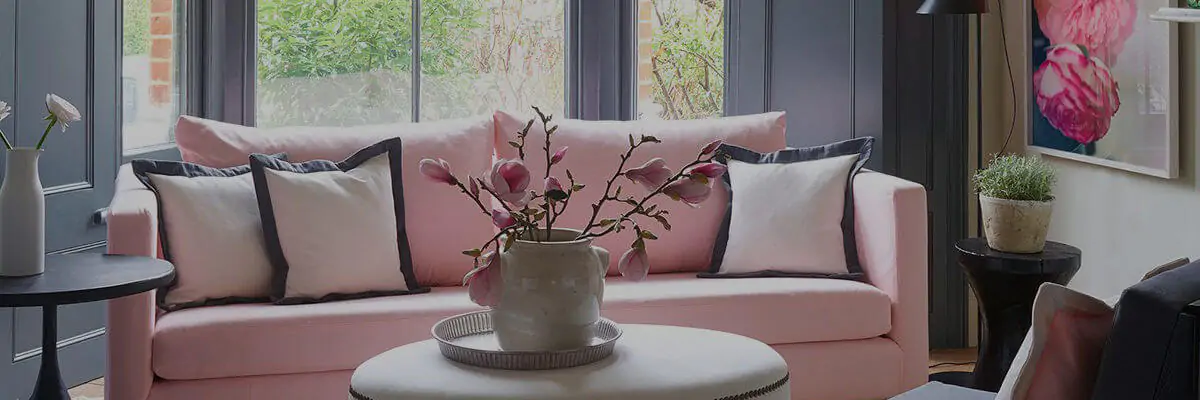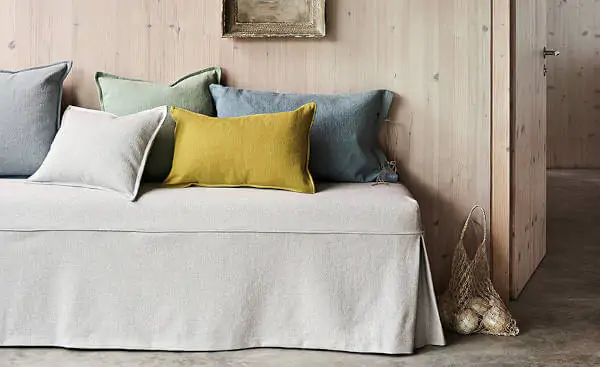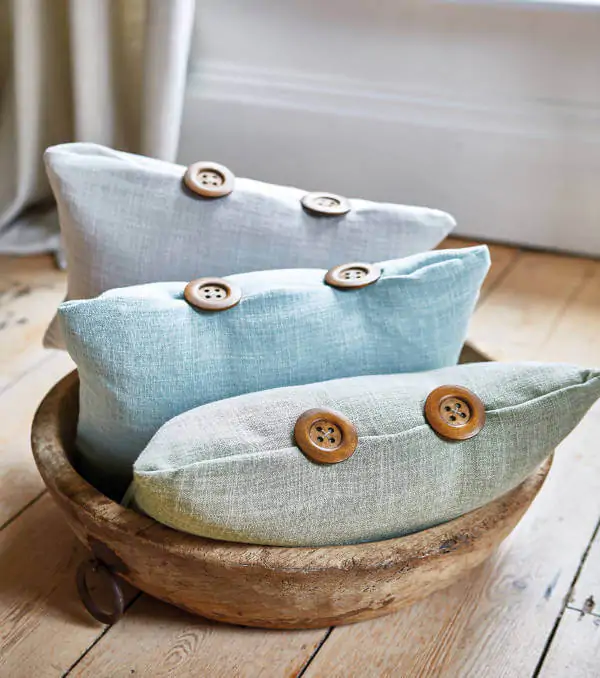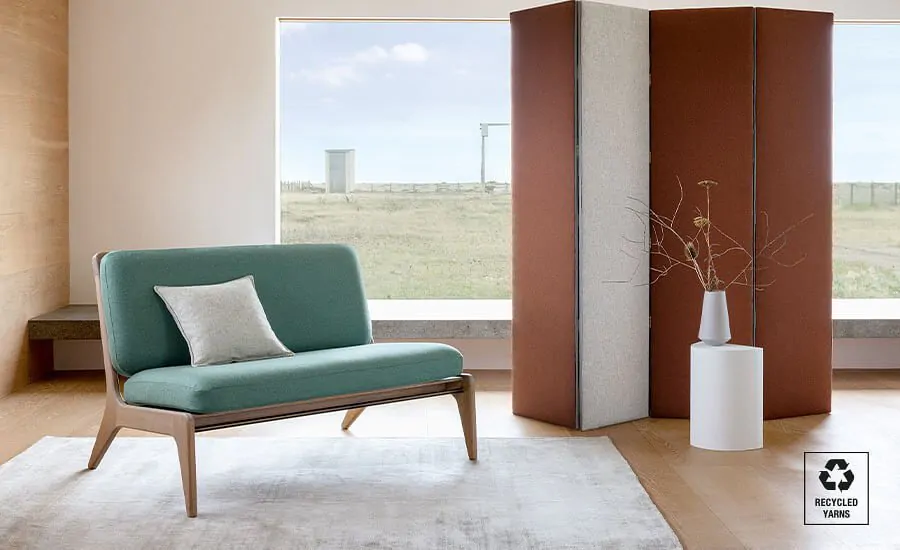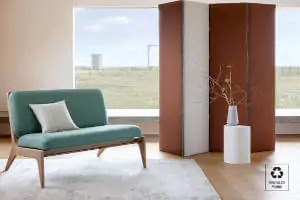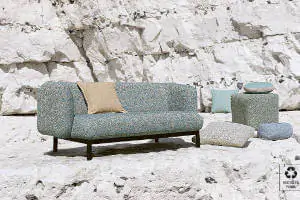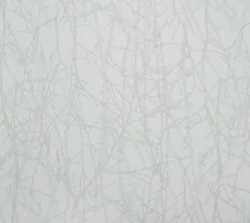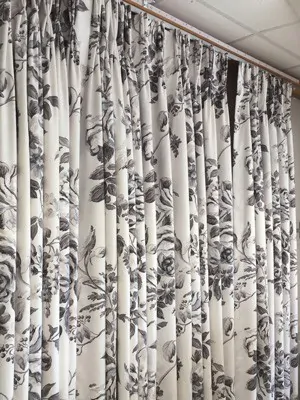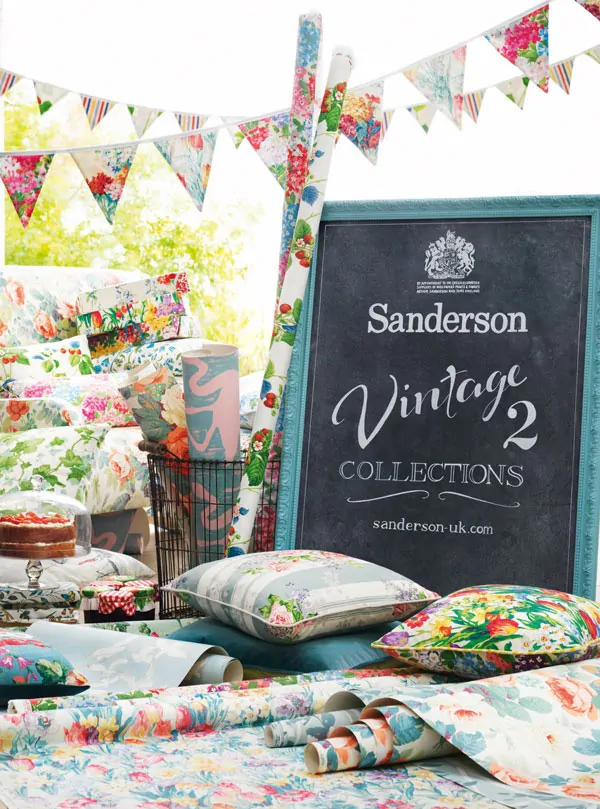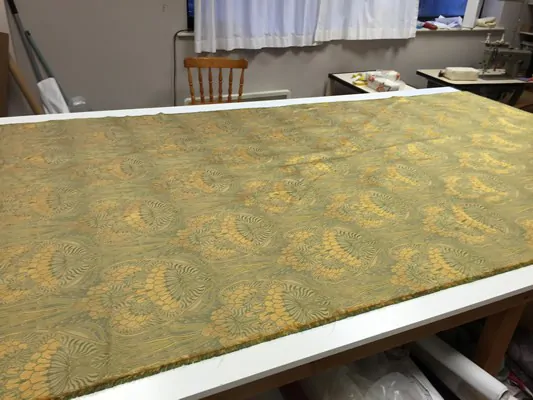Eco Friendly Upholstery
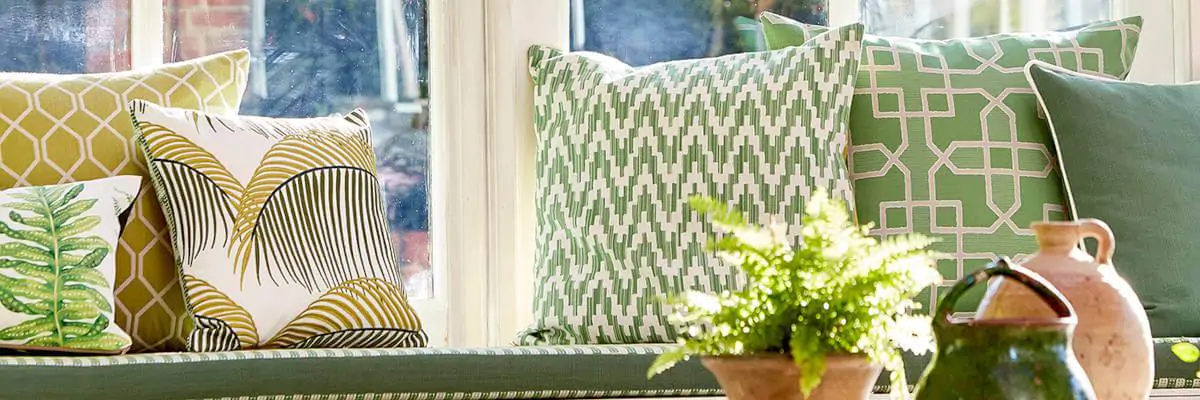
Top tips for making your upholstery project environmentally friendly with information and advice on eco friendly and sustainable upholstery fabrics and upholstery fillings.
Our Top Five Tips for Eco-Friendly Upholstery
Re-covering old furniture with new fabric not only transforms the look and functionality of the piece it is a great way to incorporate existing furniture into your latest interior design style. It is also better for the environment to re-upholster and reuse furniture rather than send it to a landfill.
The good news is it is now much easier to make environmentally considered choices when choosing fabrics as most of the top the luxury brands have introduced eco-friendly and sustainable fabric ranges including eco-friendly upholsteries.
Below are our five steps to make your upholstery project eco-friendly:
1. Take Care Dismantling the Furniture
If you want to ensure your furniture can be re-covered or as much of it as possible can be reused you need to take care when dismantling the furniture. Take a look at the piece before you start working on it, try to see if you can work out where the joins are and how it was assembled. Try to avoid breaking the frame and always try to remove stitches rather than cut the fabric.
- Check out online upholstery video guides, if you can see how furniture is upholstered it may help you work out how to take it apart. This will also be useful when you are applying your own fabric later.
- If you can remove the existing fabric without cutting it, or with the minimum number of cuts, you can use it as a pattern template when you cut your new fabric. This will be much easier than drawing your own pattern.
2. Reuse and Recycle
Don't just discard the removed fabric or any spare off-cuts from your new fabric, consider whether you can reuse it for another project (perhaps a pet-bed, or dolls furniture or clothes). It is also worth keeping any spare fabric from your new upholstery fabric, you may need it for repairs but you may also be able to create decorative items with it, for example cushions and curtain tie-backs.
If you have any fabric left over which you can't reuse at home then check to see if your local council or any charities may collect it for recycling.
3. Take the Opportunity to Repair the Frame
You will likely already be motivated to reuse the frame, this is the core which gives the furniture piece its form and shape, but you should also look to make any needed repairs if you can. Whilst the cover is off tighten any screws, replace rusted ones, add new brackets and supports if needed and paint or varnish any of the frame which will not be covered by the upholstery fabric.
4. Choose Environmentally Friendly Upholstery Filling
Unfortunately, old foam fillings are unlikely to be suitable for reuse or recycling, older foam fillings won't meet modern fire safety standards. However, you can make eco-friendly choices when replacing or adding new padding or filling, with a wide selection of sustainable and environmentally fillings including natural fibres which will be biodegradable, as well as reclaimed and recycled materials. Some popular eco-friendly upholstery fillings include:
Natural Upholstery Fillings
- Wool Filling - Wool has been used as an upholstery filling for centuries, it is naturally springy and offers great comfort. It is also natural resistant to fire offering low flammability meaning chemical treatments may be avoided. Wool also has good moisture absorbing qualities which can mean fewer dust-mites, which makes it a good eco-friendly choice for allergy sufferers.
- Horsehair Filling - Horsehair has been used for centuries in high quality upholstery due to its incredible resilience and great breathability, excellent durability and comfort.
- Down or Feather Filling - the bounce in down or feather filled upholstery comes from using higher quality curved feathers. Feathers have been used in furniture for hundreds of years and is durable and breathable.
Plant Based Upholstery Fillings
- Coir Filling - made from the husks of coconut coir has good ventilation properties and is durable because of the strong elastic fibres.
- Cotton Filling - cotton is a natural, plant-based textile, and can be a great choice for upholstery fillings due to its soft and breathable characteristics.
- Latex Filling - natural latex comes from rubber trees and offers a great natural eco-friendly upholstery filling, offering comfort and support as well as helping to control temperature. Natural latex is also hypoallergenic, anti-microbial and dust mite resistant making it a good eco-friendly upholstery filling for allergy sufferers.
Man-Made Eco Friendly Upholstery Fillings
- Recycled Plastic (RPET) Filling – recycled plastic is made from plastics which might otherwise have ended up in landfill. As an upholstery filling it is comparable to polyester padding but is more durable, offering good support and comfort.
- Re-Constituted Foam Filling - Reconstituted foam combines the offcuts of foam which would otherwise go to landfill to offer an eco-friendly foam upholstery filling. Foam offers good comfort and support, as well as being breathable.
- Pro Tip: Leave a small card with details of the upholstery filling and date on the underside of the furniture, or just inside the base cover, this will help with later recycling.
5. Use Eco Friendly Upholstery Fabrics
Similarly to fillings eco-friendly fabric include a full range of natural fibres as wall as recycled materials, including a wider selection of plant based choices include cotton, linen, hemp and bamboo. Some of the more popular eco friendly upholstery fabrics include:
Plant Based Upholstery Fabrics
-
Cotton Upholstery Fabric – as a plant-based fabric cotton is well placed to be used in an eco-friendly upholstery fabric collection, but for the most ecologically sound choice look for organic cotton fabric.
- Linen Upholstery Fabric - is another great plant-based fabric which can be a great choice for upholstery fabric due to its durability and natural anti-bacterial properties, to ensure durability choose a top-quality fabric brand.
- Bamboo Upholstery Fabric – fabrics made from bamboo fibre offer a great eco-friendly choice as an upholstery fabric sure to natural anti-bacterial properties, good breathability as well as being durable. Bamboo also grows very quickly. The only downside is it may require more chemical processing to make it usable than other plant-based fabrics.
- Hemp Upholstery Fabric – Hemp is a very versatile and durable fibre, it has been used for centuries to make fabrics, ropes and fibres. It is naturally stronger than cotton and hypo-allergenic making it a good upholstery fabric choice. Like Bamboo it also grows very quickly making it easy to produce in large quantities.
Natural Upholstery Fabrics
- Wool Upholstery Fabric – wool offers great insulation properties, is breathable and also naturally fire resistant (meaning less chemicals are needed to treat it). For an even more eco-friendly choice choose organic wools from ethically treated animals.
-
Silk Upholstery Fabric – can be an environmentally sound choice for upholstery fabric, silk is made from the natural protein fibre produced by certain insect larvae to form cocoons, the most common being the Mulberry silkworm. The fabric is breathable and light, with light reflective qualities.
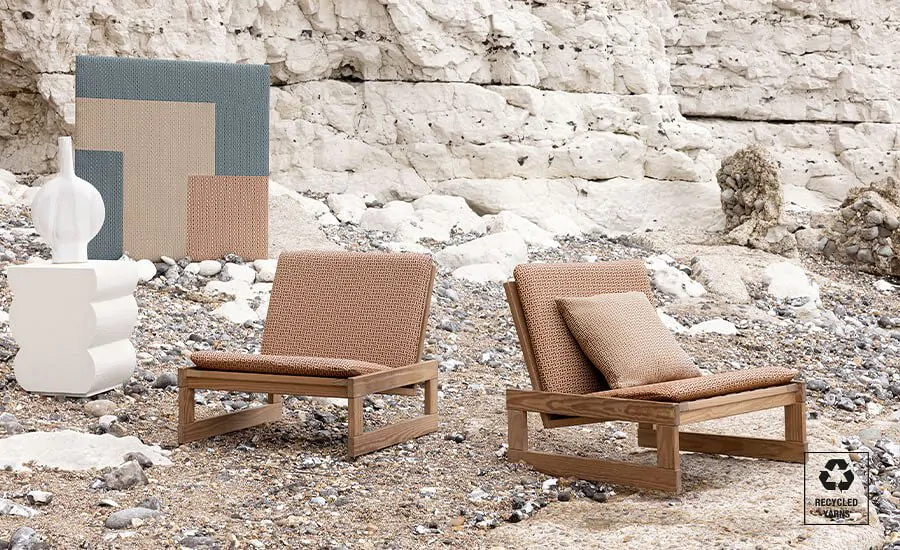
Man-made Eco-Friendly Upholstery Fabrics
- Reclaimed Leather Upholstery Fabric – Reclaimed or bonded leather is leather which has been broken down and repurposed to create new fabric. Reclaimed leather has the look and feel of leather, and is both durable and lightweight.
- Recycled Plastic (RPET) Upholstery Fabric –plastics, such as water bottles, are broken down and repurposed into a soft fabric. This saves waste being sent to landfill as well as being less energy intensive than creating some new fabrics.
If you want to learn more about RPET, take a look at this behind the scenes video for the latest Eco fabric collection from Clarke & Clarke. You can see just how great these fabrics look and as a bonus how many platic bottles you can save from landfill by choosing this fabric for your upholstery.
Recycled Polyester Upholstery Fabric - polyester fabrics can be recycled to create new polyester, this reduces waste being sent to landfills and takes less energy than creating new polyester fabrics. Recycled polyester can be 100% polyester (PET) or a blend, details can be found in the fabric specifications.
Faux Leather and Faux Suede Upholstery Fabric – Whilst manufacturing animal friendly faux-leather and faux-suedes can be less energey intensive than other fabric manufacturing processes, it can produce waste so care needs to be taken to choose a faux leather from a quality manufacturer with commitments to the environment. If you are concerned about plastics and man-made materials the good news is there have been some recent innovations with natural materials including some cork based faux-leathers.
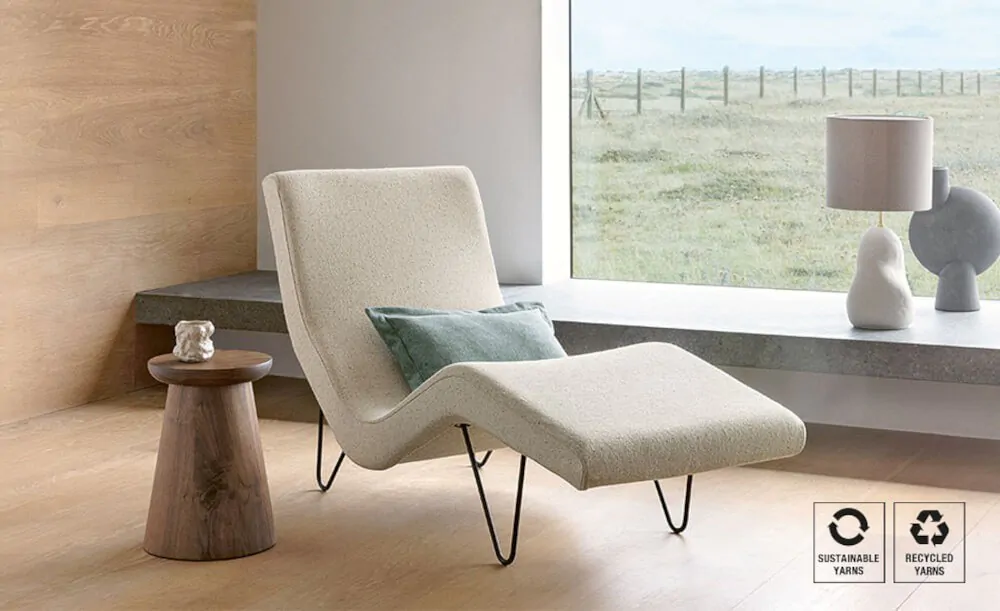
Further Guidance
For further guidance on upholstery fabrics see our Guide to Upholstery Fabrics.
Remember: if you are carrying out an upholstery project you must ensure you comply with any local or national fire safety and similar regulations.
Shop for Eco Friendly Fabrics
In addition to eco friendly upholstery fabrics the luxury interior fabric brands also offer an increasing range of environmentally friendly fabrics for general use, meaning you can ensure your curtains, cushions, voiles and more are equally as environmentally friendly.
Alternatively, once you have completed your upholstery project why not take a look at our range of eco-friendly paints and wallpapers.
Trending Eco Friendly & Sustainable Fabrics
TM Interiors
Can’t find what you’re looking for? We can help.
If you want some help choosing an eco-friendly upholstery fabric, or would like us to carry out some upholstery for you, call our customer services team on 01733 230 499 or email us at info@tm-interiors.co.uk.

Eco Friendly & Sustainable Fabric Ranges
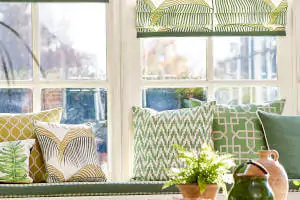
Linnean Weaves by Sanderson
A collection of stylised micro-weaves including 100% cotton upholstery fabrics.
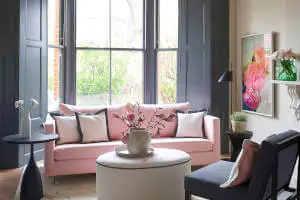
Verde Fabrics by Linwood
Beautiful cotton upholstery fabrics woven with 80 per cent recycled cotton using offcuts from the fashion industry.



